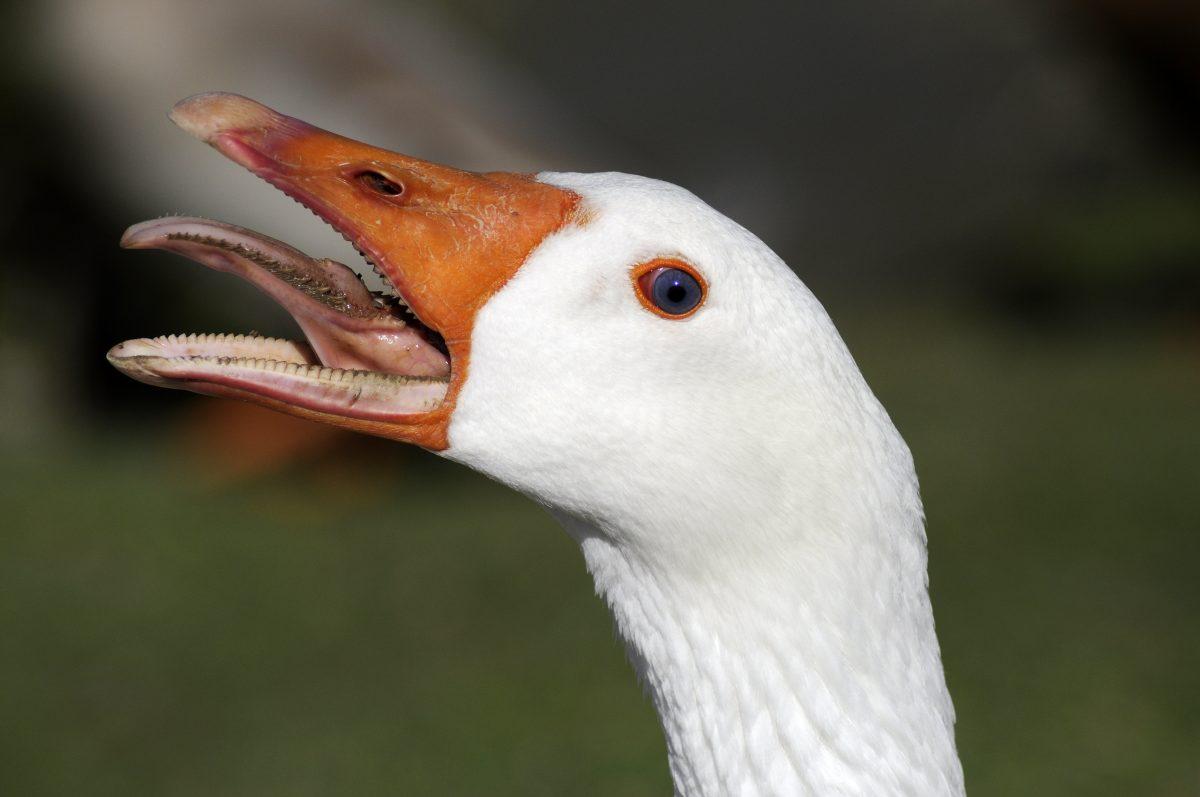
Goose Teeth // Jayt74 via Flickr
SMILE FOR THE CAMERA. Geese have teeth-like structures called tomia to help them grip and shred their food.
By: Ashley Bergeron
Staff-Writer
Geese are members of the family Anatidae, which also includes ducks and swans. In this family, there are the genera Anser (grey and white geese) and Branta (black geese) which are considered true geese. Some members of the Tadorinae family (example: Egyptian Goose) are called geese but not considered “true geese” taxonomically.
Compared to other waterfowl, geese have an intermediate-sized body with a short neck, and their bill is humped at the base and becomes gradually smaller. Males and females look the same, but males are typically larger than females.
Most goose species are migratory. They migrate due to an inhospitable environment and lack of food sources in their breeding grounds, making their goslings safer from predators. Breeding occurs in the summer. However, due to climate change, some populations of geese are staying year-round at one location. The most common example of this is the Canada Goose, which stays in Northern Indiana year-round.
A goose’s diet mainly consists of vegetation like grasses, grains and aquatic plants. Their favorite out of the three is grass. They occasionally will eat insects and small fish, but they prefer grasses over animals.
Geese have teeth-like structures called tomia. These cartilage structures help with gripping and shredding their food, as they don’t chew. Tomia are found on the inside of the bills and the edges of their tongues.
The common species in Indiana is the Canada Goose. Some migratory geese like the Greater White-Fronted Goose and Snow Goose have been spotted in Indiana during their migratory system.
The population of the Canadian goose is about 113,000. This has been stable since 1999. However, less than fifty years ago, Canadian geese were difficult to find. Due to restoration efforts and more bodies of water in urban and suburban areas, the population was able to bounce back – even though geese may be an inconvenience in your everyday life, try to appreciate the environment your hometown has given for them to thrive next time you’re waiting for them to cross the road. (Not to mention, you can be summoned to court and slapped with a fine if you hit one with your car.)
If you want to learn more about geese (and other birds), go to allaboutbirds.org. If you’re interested in learning about waterfowl hunting, the Indiana Department of Natural Resources has guidelines on its website.
 A Gaggle // Ashley BergeronRESTING BETWEEN CLASSES. A gaggle of Canadian Geese hanging out on Greenlawn on a cold day.
A Gaggle // Ashley BergeronRESTING BETWEEN CLASSES. A gaggle of Canadian Geese hanging out on Greenlawn on a cold day.